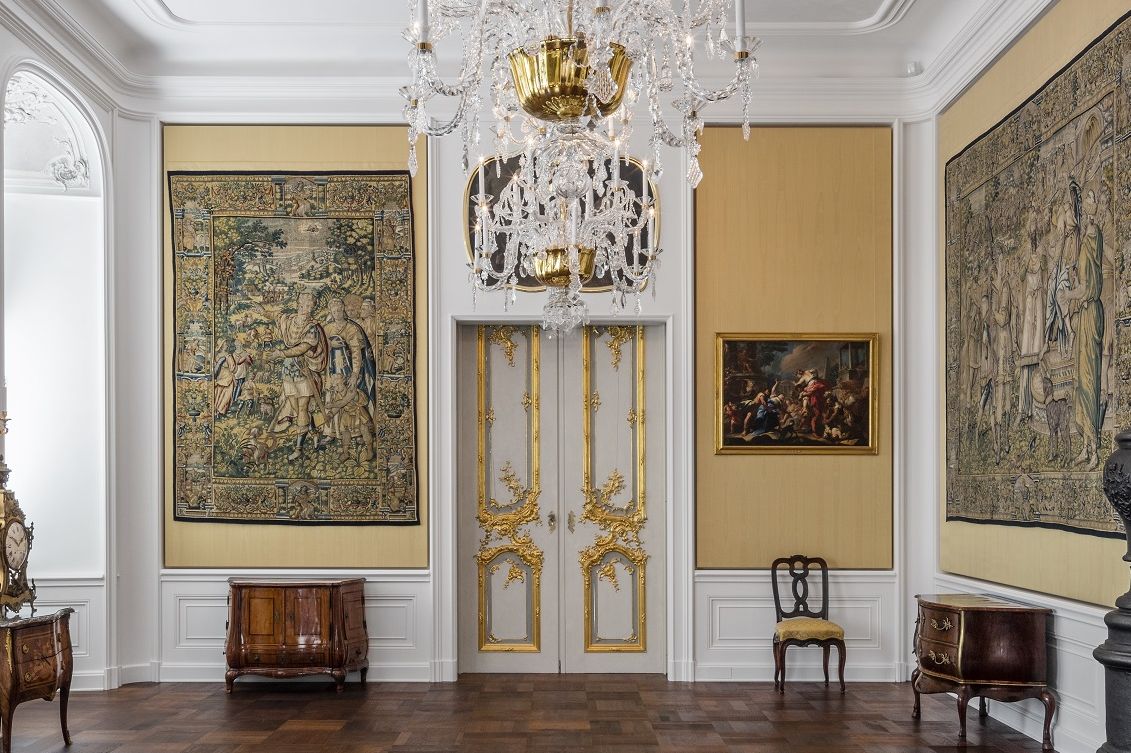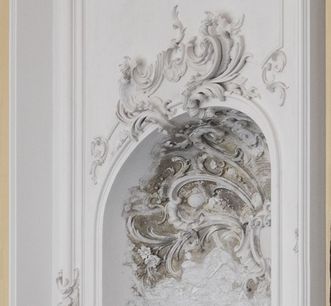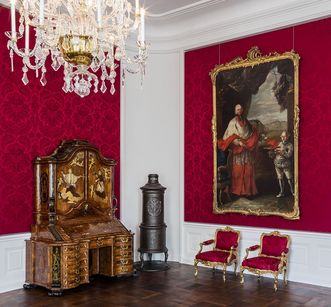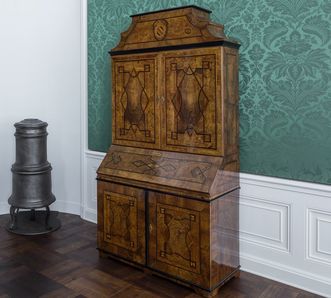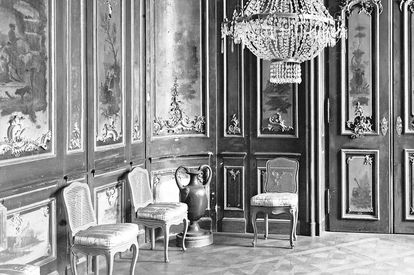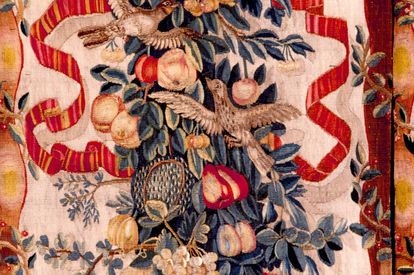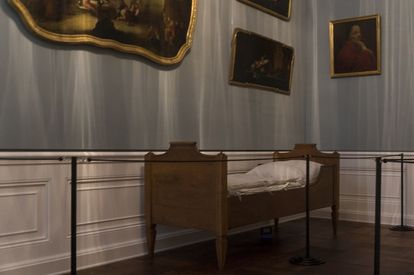The Yellow Room
The Yellow Room, the antechamber to the southern state apartment, holds what remains of the Rococo pieces that once decorated all the rooms. The furniture on display from the workshop of Abraham Roentgen is some of the most precious furniture of the palace. The commodes and the game tables were part of a delivery of "7 pieces of wooden goods" to Prince-Bishop von Hutten in 1764. The tapestries hung here show scenes from the Old Testament. They are among the oldest tapestries in Bruchsal Palace.



